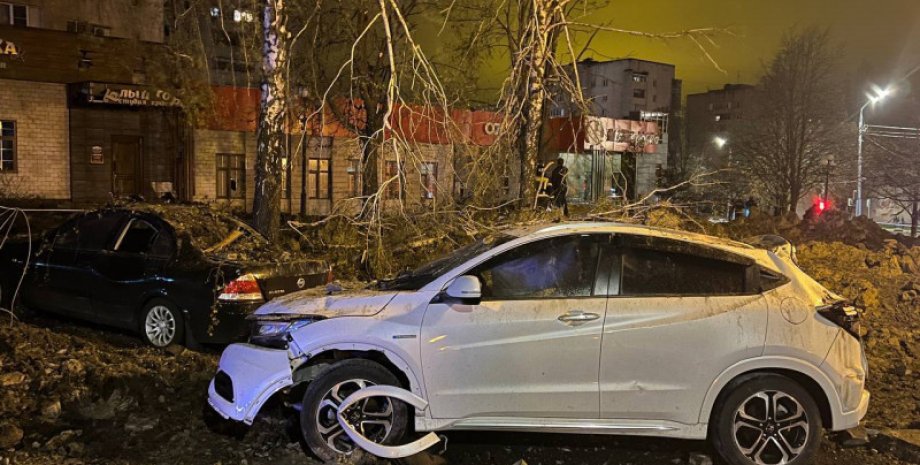
 By Eliza Popova
By Eliza Popova
The powerful bombs that Russia used to turn Ukrainian cities into ruins also fall in its own territory, reported in a Russian document intended for internal use, which, however, was at the disposal of The Washington Post. According to this document, at least 38 bombs, which were considered to have contributed to the recent territorial offensive of Russia, fell in the Belgorod region on the border with Ukraine in the period from April 2023 to April 2024, although most of them did not explode.
These planning bombs, which can be compared to more sophisticated American -managed JDAM bombs, are large ammunition of Soviet times, equipped with systems of guidance, which, according to experts, often fail, which leads to falls in Russia. Most bombs were discovered by civilians - foresters, farmers or villagers. In most cases, the Ministry of Defense did not know when the bombs were dropped, which indicates that some of them could stay there for several days.
According to the document, at least four bombs fell into the city of Belgorod with a population of about 400,000 people. Seven more were found in the surrounding suburbs. Most of all, 11 bombs fell in the border area of Grayvoron, where some failed to find because of a "difficult operational situation".
The document, originally intercepted by the Ukrainian intelligence and transmitted by The Post, contains a spreadsheet of incidents with reference to extraordinary resolutions on the disposal of bombs and evacuation, and, apparently, is the product of Belgorod City Emergency Situations. The independent Russian media "Astra" confirmed that many incidents mentioned in the document correspond to the fact that they were received from local authorities and local media.
The people mentioned as witnesses were confirmed as locals. Although bombs do not usually explode, one of the first bombs that struck Belgorod in April 2023 exploded, falling on a usually lively street, forming a width of 20 meters wide, knocking out windows and scattering the cars. However, the incident happened at night, and the victims were not reported. Later, a second bomb was found, which did not explode, which burned into the ground to a depth of seven meters.
The Russian military then acknowledged that the explosion was "accidental discharge of aviation ammunition" from the Russian fighter-bomber Su-34. The document later confirmed that it was a planning bomb Fab-500 with a amount of 500 kilograms. Local authorities tend to keep silence about the incidents, reporting only "accidents", accusing the Ukrainian side of this, or simply not reporting the various explosions that are shaking the area, especially recently.
May 4 - after the period covered by the document - another bomb fell on Belgorod, resulting in the injured seven people, and more than 30 homes were damaged in a small village. Referring to the source in emergency services, Astra reported that it was also Fab-500. Governor of Belgorod region Vyacheslav Gladkov only informed that there was an "explosion". On May 12, another explosion destroyed several floors of an apartment building in Belgorod, resulting in killed 17 people.
The Russian military accused the Ukrainian missile, and Conflict Intelligence Team, a Russian research group specializing in open source investigations, stated that the video from the scene indicated that this was the result of another random Fab-500 explosion or unauthorized missile. released by the Armed Forces of the Russian Federation. On June 15, an explosion occurred in Shebekino near Belgorod, which resulted in part of a five -storey building, which causes at least five people to die.
It was probably another crash of the planning bomb. According to Astra's own estimates, in the last four months, Russia accidentally dropped over a hundred bombs into its territory, as well as to occupied areas in eastern Ukraine. During the same period, the use of planning airbombs has increased significantly. The Russian government did not respond to the request to comment on the document or reports of faulty airplanes.
Planning bombs are a Soviet relic of the Cold War, created as "blunt bombs" that are dumped on the target. Russia has adapted this large stock of uncontrollable bombs to the modern war, modernizing their guidance systems known as UMPC kits - cheap sliding wings and navigation systems. This enables Russian Su-34 and Su-35 aircraft to run them from a distance of about 65 km, which is unattainable for most Ukrainian air defense systems. "A certain percentage of Russian bombs is faulty.
This problem has existed since they started using these UMPK kits, and it is not solved dramatically. We believe that these random emissions are caused In recent Ruslan Levyev's recent review, a military expert in Conflict Intelligence Group, which has monitored Russian military actions in Ukraine since 2014. Based on Ukrainians' statements about the number of Bombs running and ASTRA data on CIT's unsuccessful work estimated 4-6 percent failures.
"Under normal conditions, such a system would need to be improved to avoid bombs in the settlements in its own territory. We do not know if the Russian Federation is spending on this resources now. They may be suited to this situation," said The Washington journalists Post. Planning bombs are not as accurate as winged missiles, and often do not fall into the target, but because of their explosive force, they still cause significant damage.
At the end of March, the Ministry of Defense of the Russian Federation announced the development of a new, more difficult version of the planning bomb, Fab-3000. It is considered that the first time she was thrown into the village of Lipka in Kharkiv region. Already reported crashes in the work of huge new Fab-3000. On June 29, one of them fell into an empty field near Shebekino and exploded, but did not victims, Astra reports.










All rights reserved IN-Ukraine.info - 2022